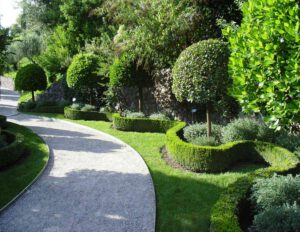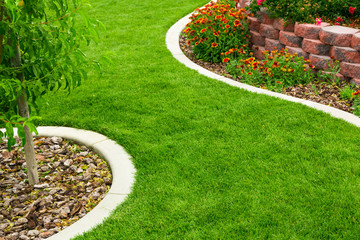Top 5 Landscaping Techniques
If you’re looking to add some style and grace to your home or office, there are a few simple landscaping techniques that you can apply to make your outdoor space look great.

A lawn is a soil-covered area, usually composed of grasses, used for recreational and aesthetic purposes. Lawns are usually green in color and are maintained with the aid of a lawnmower. They help to mitigate dust generated by intensive foot traffic and provide a smooth surface for sports and recreation.
A lawn may also function as a carbon sink, reducing the amount of carbon dioxide in the atmosphere. However, the benefits of lawns are often outweighed by the costs of maintaining them.
Many homeowners employ landscapers to care for their lawns. These professionals often use fertilizers and pesticides to maintain their grasses. Homeowner associations regulate the maintenance of lawns.
The average American home has a lawn of about one-third of an acre. They consume about 10,000 gallons of water each year. This figure is not surprising considering that the average household uses about 40 to 60 percent of its household water on its lawn.
Lawns are a popular feature of many public landscapes, including city parks. Grassed areas are also common in forest areas, where livestock graze. In the States, many embassies have large lawns.
A lawn is a good way to reduce urban flooding. It is also a great way to restore groundwater. Various technologies have been developed to maintain lawns and keep them looking lush and green.
One of the most environmentally friendly methods is to plant native plants. These plants can free up space in your yard for vegetables and pollinator gardens. Alternatively, you can create a wildlife habitat garden, which can attract a variety of birds, insects, and other creatures to your property.
There are a number of other alternatives to lawns, however. A few of these include meadows, turf, and moss lawns. Each type requires different maintenance.
In addition to being visually pleasing, a lawn can be a carbon sink, restoring groundwater and reducing urban flooding. As climate change continues to affect the world, it is important to consider the various alternatives that can be used to avoid the negative impact of these changes.
While lawns have been around for centuries, they have only recently achieved the status of being considered a “best” or “middle” form of landscaping. The newest varieties require little or no water and are more efficient, environmentally friendly, and cost-effective than the old standbys.
If you’re looking for an environmentally friendly option for your landscape or patio, permeable pavers are the way to go. They can be used to create pathways, patios, and even pool decks. In addition, they can help you meet impervious cover code requirements.
Permeable pavers are great because they help to reduce the amount of water runoff that gets into storm drains. This means less polluted runoff, which can disrupt natural waterways. By directing the water to the underground aquifer, you can also prevent flooding.
Permeable pavers are made of concrete, asphalt, or a combination of the two. Their joints are wider, which allows the water to permeate through the system. The pavers themselves can also be filled with pea gravel or pebbles.
While pavers do cost more than traditional asphalt or concrete, you will save on maintenance costs. Plus, they look great. You can find a variety of styles and colors to match any aesthetic.
These pavers are ADA-compliant. In addition, they have permeable joints, which allow water to flow from the hardscape into the soil. This helps to avoid standing water on the surface, which can attract mosquitoes and other pests.
For homeowners, permeable pavers are an economical and eco-friendly option. Not only are they easy to install, but they are also durable. They will last for years. Moreover, they can help alleviate pressure on sewer infrastructure and keep communities cooler in the hot months.
Because they are porous, they can help to filter water before it enters the system. Also, the permeable surface will absorb and store water, so it will not be run off in storm drains or into the ocean.
Lastly, because permeable pavers are made of asphalt or concrete, they are able to hold heavy loads. As a result, they are a great choice for parking lots and other areas that receive a lot of traffic.
In addition to the environmental benefits, permeable pavers are also aesthetically pleasing. In fact, they can create the perfect outdoor party space. Additionally, they can help to eliminate the risk of ice buildup on walkways.




